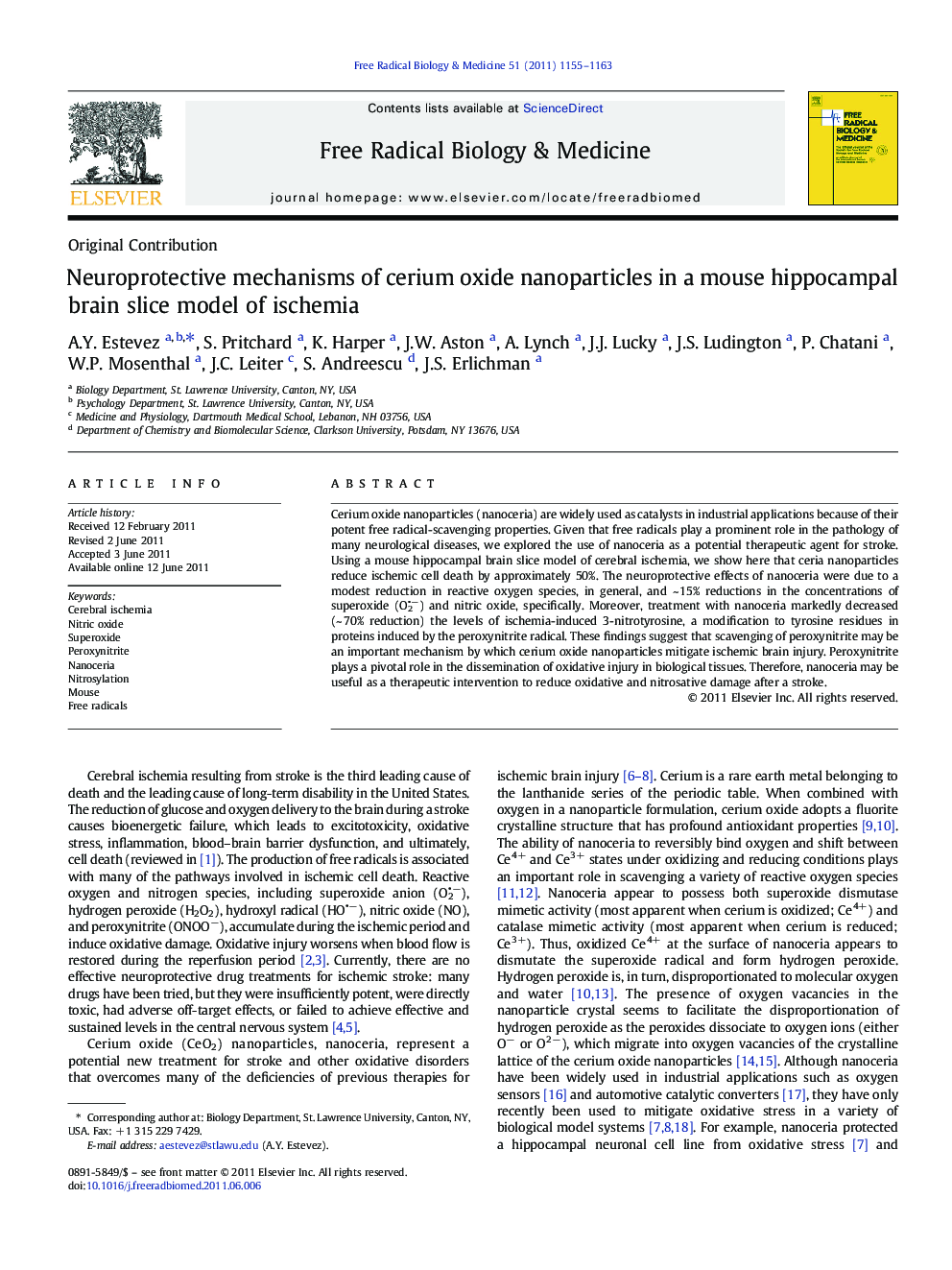| Article ID | Journal | Published Year | Pages | File Type |
|---|---|---|---|---|
| 1909144 | Free Radical Biology and Medicine | 2011 | 9 Pages |
Cerium oxide nanoparticles (nanoceria) are widely used as catalysts in industrial applications because of their potent free radical-scavenging properties. Given that free radicals play a prominent role in the pathology of many neurological diseases, we explored the use of nanoceria as a potential therapeutic agent for stroke. Using a mouse hippocampal brain slice model of cerebral ischemia, we show here that ceria nanoparticles reduce ischemic cell death by approximately 50%. The neuroprotective effects of nanoceria were due to a modest reduction in reactive oxygen species, in general, and ~ 15% reductions in the concentrations of superoxide (O2•−) and nitric oxide, specifically. Moreover, treatment with nanoceria markedly decreased (~ 70% reduction) the levels of ischemia-induced 3-nitrotyrosine, a modification to tyrosine residues in proteins induced by the peroxynitrite radical. These findings suggest that scavenging of peroxynitrite may be an important mechanism by which cerium oxide nanoparticles mitigate ischemic brain injury. Peroxynitrite plays a pivotal role in the dissemination of oxidative injury in biological tissues. Therefore, nanoceria may be useful as a therapeutic intervention to reduce oxidative and nitrosative damage after a stroke.
